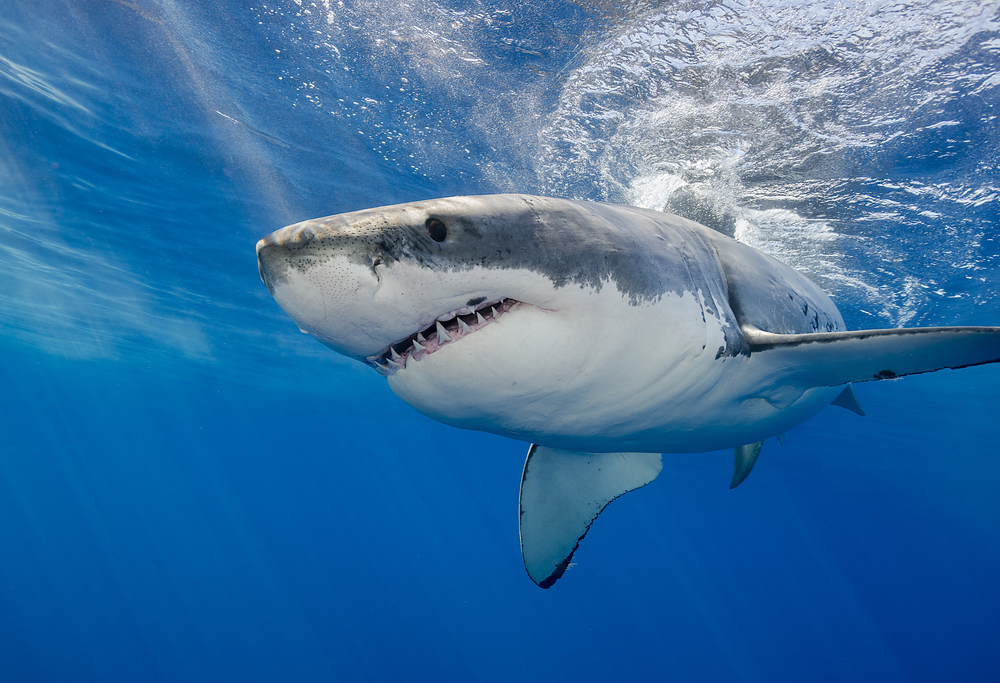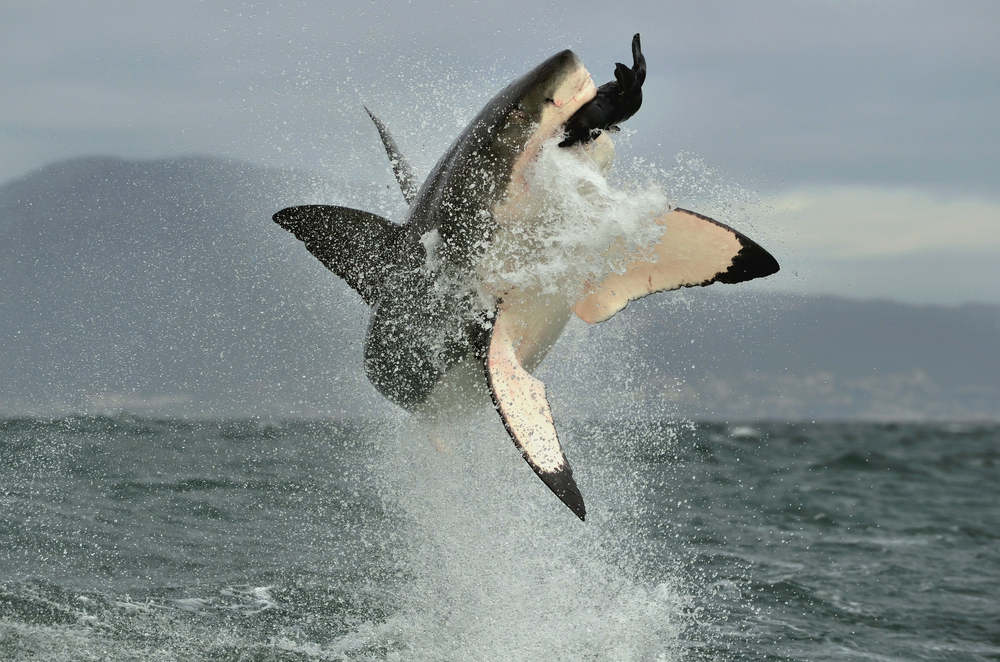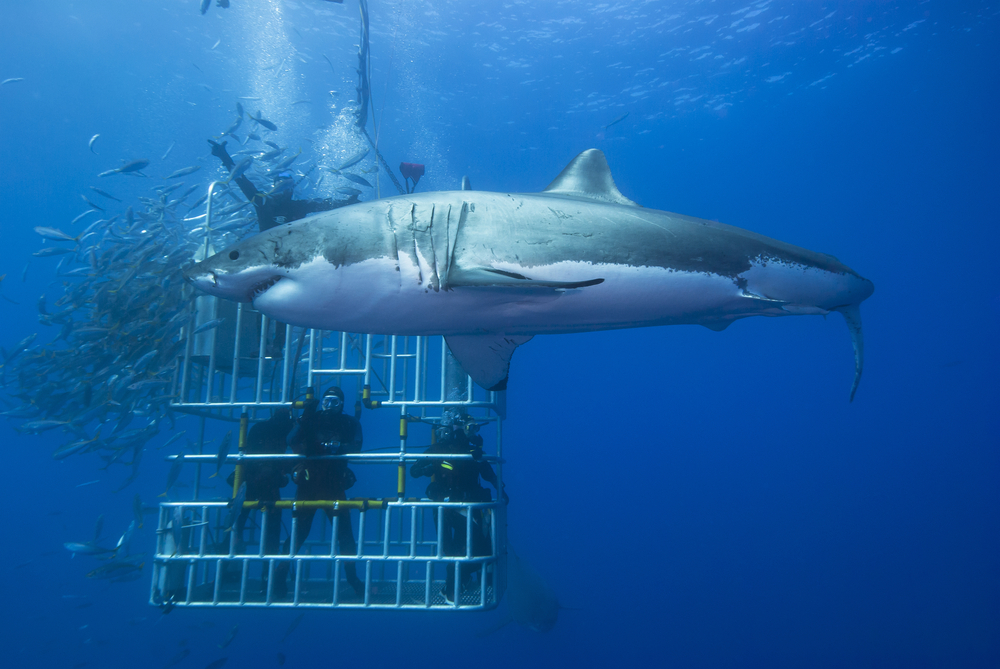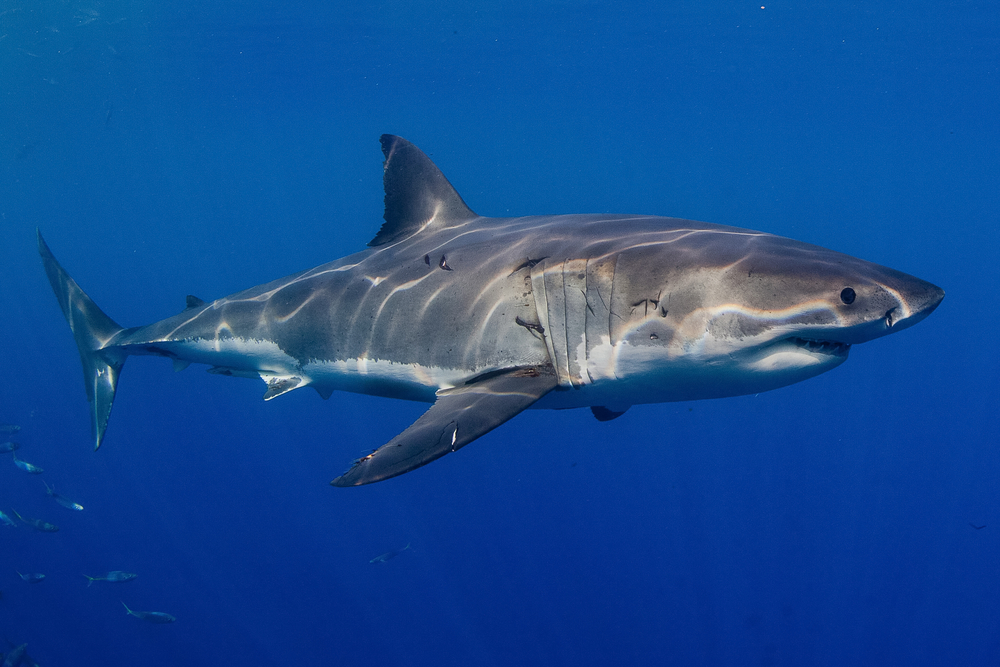Great white sharks (Carcharodon carcharias) are often portrayed as aggressive predators, but their behavior is more complex than simple aggression. Here are some key points to understand their behavior:
- Predatory Behavior: Great white sharks are apex predators in the marine ecosystem. They primarily feed on marine mammals, such as seals and sea lions, and large fish. When hunting, they display focused and deliberate predatory behavior. They approach their prey stealthily and can breach the water’s surface with incredible speed and force to capture their prey.
- Curiosity: Great white sharks are known for their curiosity. They may investigate objects, including boats or divers, by circling and occasionally bumping or “test biting” them. This behavior is often an attempt to identify what the object is but doesn’t necessarily indicate an aggressive intent.
- Provoked Attacks: While great whites are not naturally aggressive toward humans, some incidents involve provoked attacks. Harassment or attempts to touch, feed, or interact with these sharks can lead to defensive or territorial responses, sometimes resulting in an attack.
- Feeding Frenzies: During feeding frenzies, when multiple sharks are competing for food, their behavior can appear aggressive. However, this is a natural response to the competition for limited resources.
- Unpredictable Factors: While their behavior is generally not aggressive toward humans, it is important to remember that wild animals are unpredictable. Factors like water conditions, the presence of prey, and other stimuli can influence their behavior.
- Human Safety: To minimize the risk of interactions between great white sharks and humans, various safety measures and guidelines have been established for shark watchers, divers, and water enthusiasts. These guidelines aim to reduce the chances of negative encounters.
In summary, great white sharks are not inherently aggressive toward humans, and their behavior is primarily focused on their natural prey. However, they can display curiosity and may react defensively if they feel threatened. It is essential for humans to understand their behavior and respect their environment to ensure safe coexistence.











































































